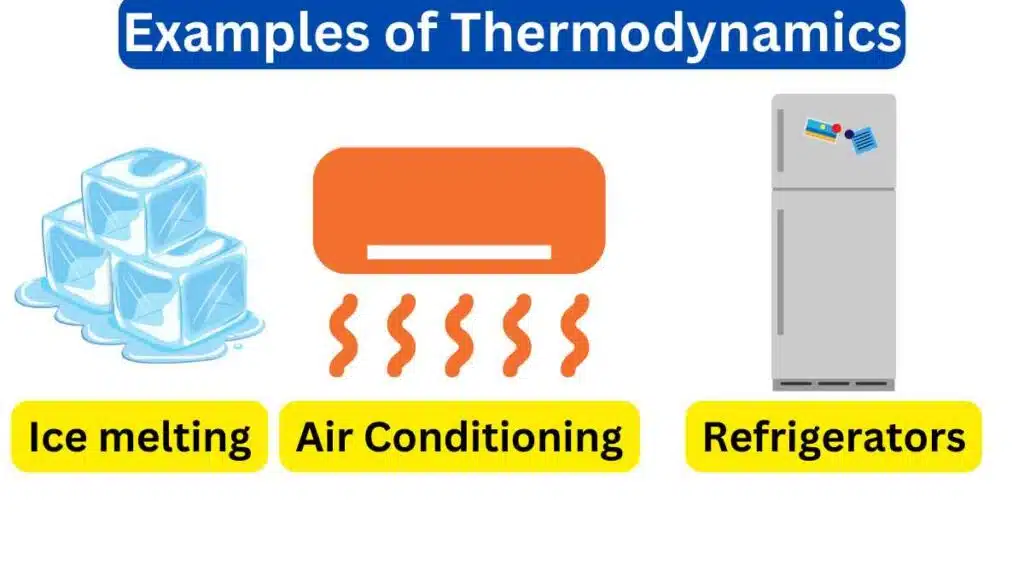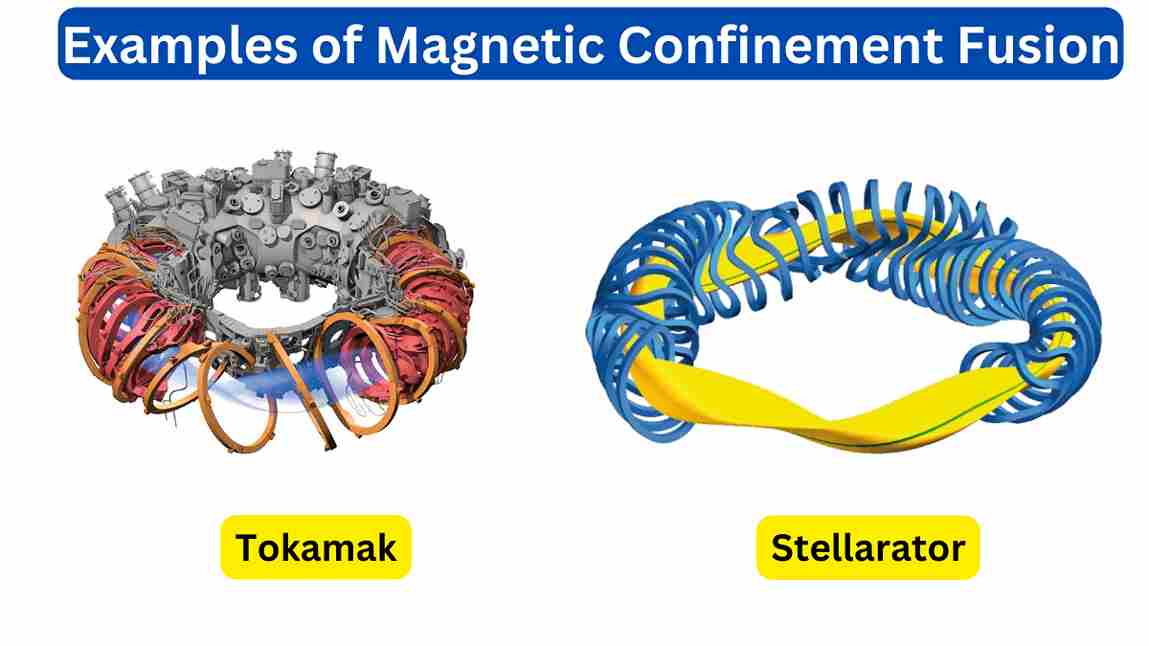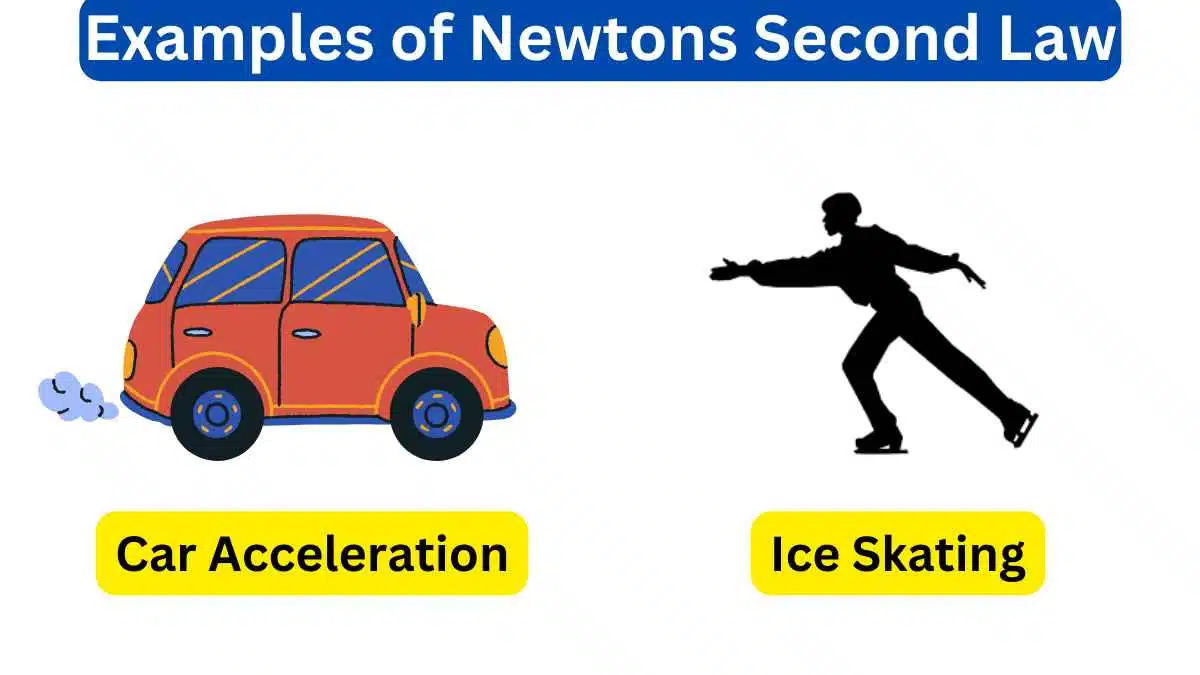10 Examples of Thermodynamics
Thermodynamics is the branch of physics that deals with the relationship between heat, work, and energy. It is one of the most fundamental branches of physics. Examples of Thermodynamics include Air conditioning, refrigerators, and Heat Engine.
Examples of Thermodynamics
Here are 10 examples of thermodynamics in everyday life.

1. Air conditioning
It is a very common example of thermodynamics. Air conditioners use the principles of thermodynamics to cool the air in our homes and offices. They work by removing heat from the air and transferring it to a different location, such as the outside air or a reservoir of water.
2. Refrigerators
Refrigerators also use the principles of thermodynamics to keep our food cold. They work by pumping refrigerant through a series of coils, which causes it to evaporate and absorb heat from the surrounding air. The refrigerant then travels to a compressor, which compresses it and causes it to condense. As the refrigerant condenses, it releases heat, which is then transferred to the outside air.
3. Heat engines
Another common example of thermodynamics is the heat engine. Heat engines are devices that convert heat energy into mechanical energy. They are used in a wide range of applications, including cars, trucks, and power plants.
Heat engines work by using a working fluid, such as water or steam, to expand and drive a piston or turbine. The expansion of the working fluid is caused by the addition of heat from an external source.
4. Internal combustion engines
Internal combustion engines are a type of heat engine that is used in cars, trucks, and other vehicles. They work by igniting a mixture of air and fuel in a cylinder. The combustion of the fuel causes the air to expand, which drives a piston. The piston is connected to a crankshaft, which rotates and drives the wheels of the vehicle.
5. Power plants
Power plants use heat engines to generate electricity. The most common type of power plant is a fossil fuel power plant, which burns coal, natural gas, or oil to heat water and produce steam. The steam drives a turbine, which generates electricity.
6. Ice melting
When ice melts, it absorbs heat from its surroundings. This is because the energy required to break the bonds between the water molecules is greater than the energy released when the water molecules form new bonds in the liquid state.
7. Cooking
When we cook food, we are essentially adding heat energy to it. This causes the food to change its state, from solid to liquid to gas. It also causes the food to undergo chemical changes, which can improve its taste and texture.
8. Metabolism
Metabolism is the process by which our bodies convert food into energy. This process is driven by thermodynamics. The energy from food is used to power our bodies’ cells and tissues.
9. Photosynthesis
Photosynthesis is the process by which plants use sunlight to convert carbon dioxide and water into oxygen and glucose. This process is also driven by thermodynamics. The energy from sunlight is used to drive the chemical reactions that take place during photosynthesis.
10. Climate change
Climate change is the long-term alteration of temperature and typical weather patterns in a place. Climate change is caused by a number of factors, including the release of greenhouse gases into the atmosphere. Greenhouse gases trap heat energy from the sun, which causes the Earth’s temperature to rise.







Leave a Reply